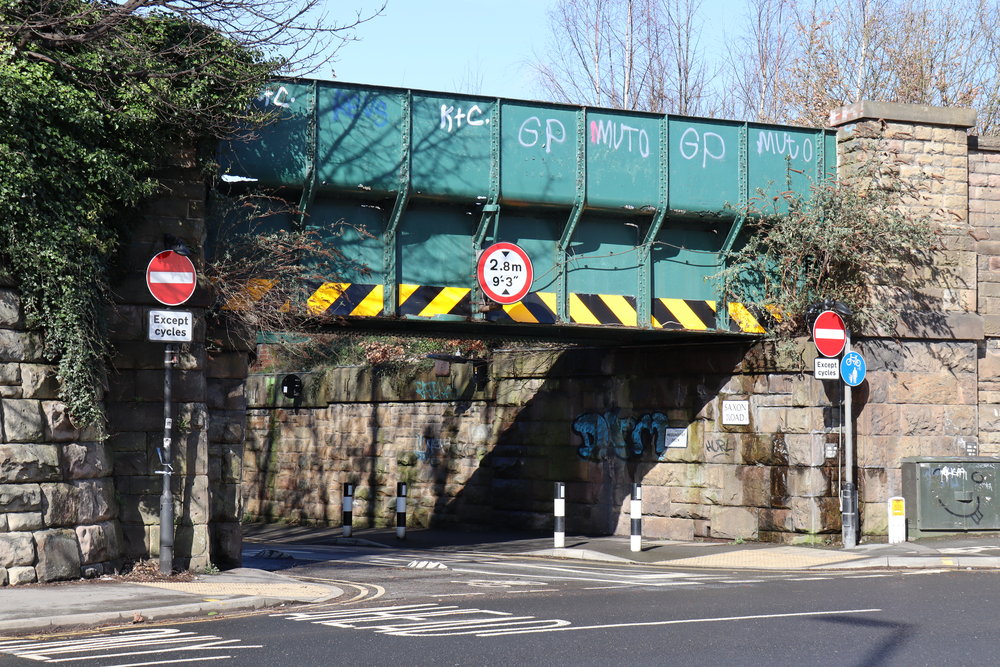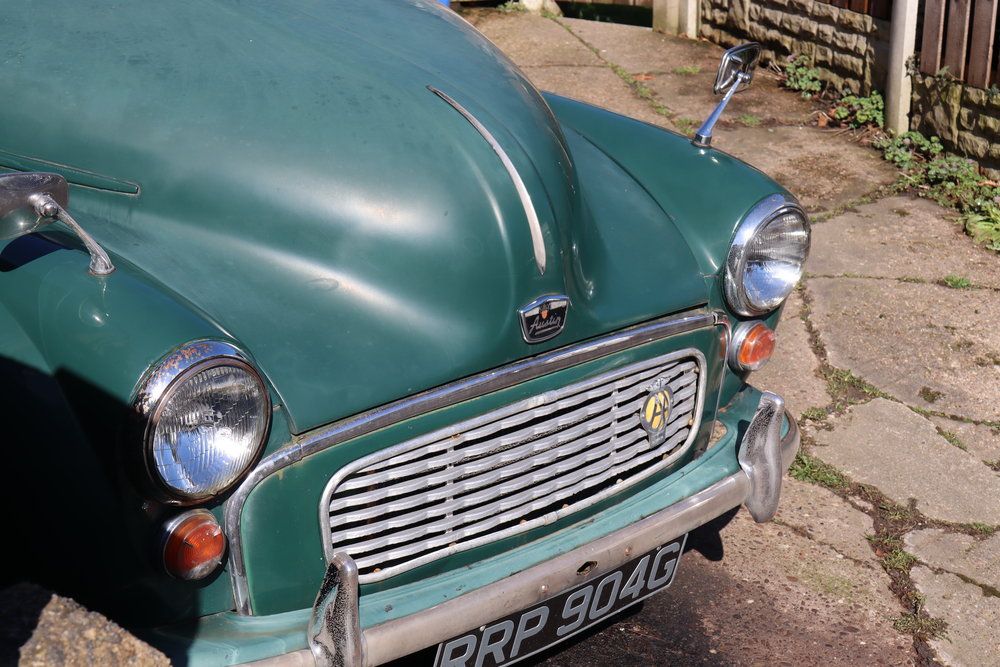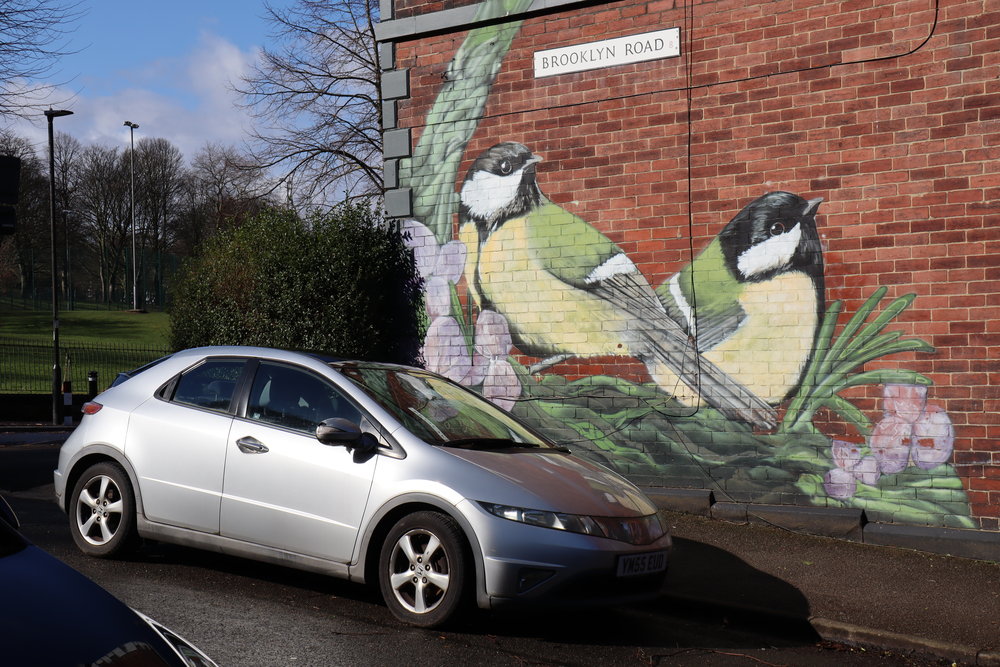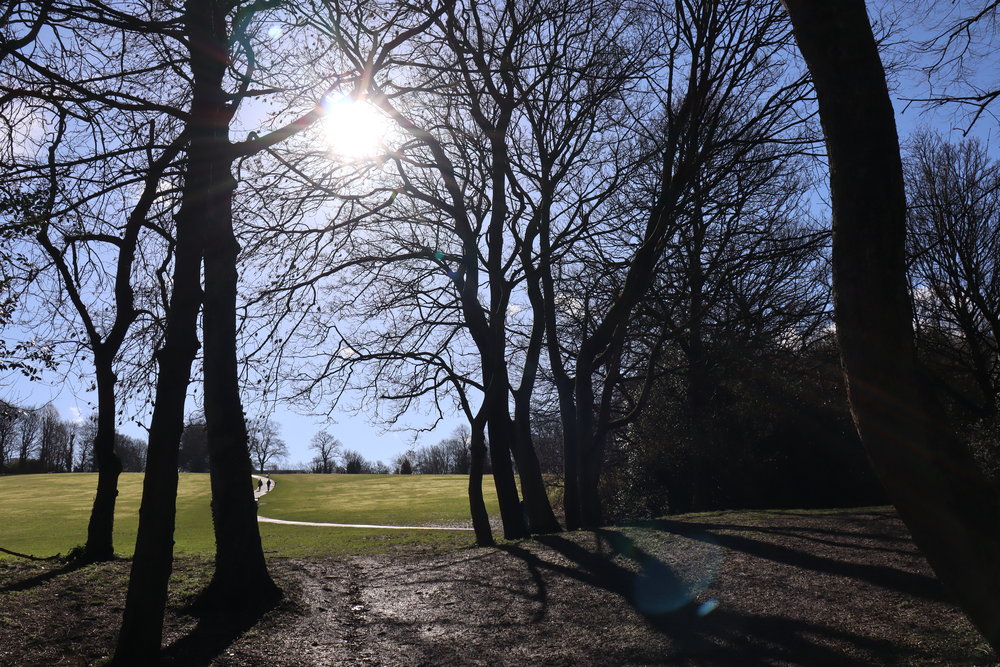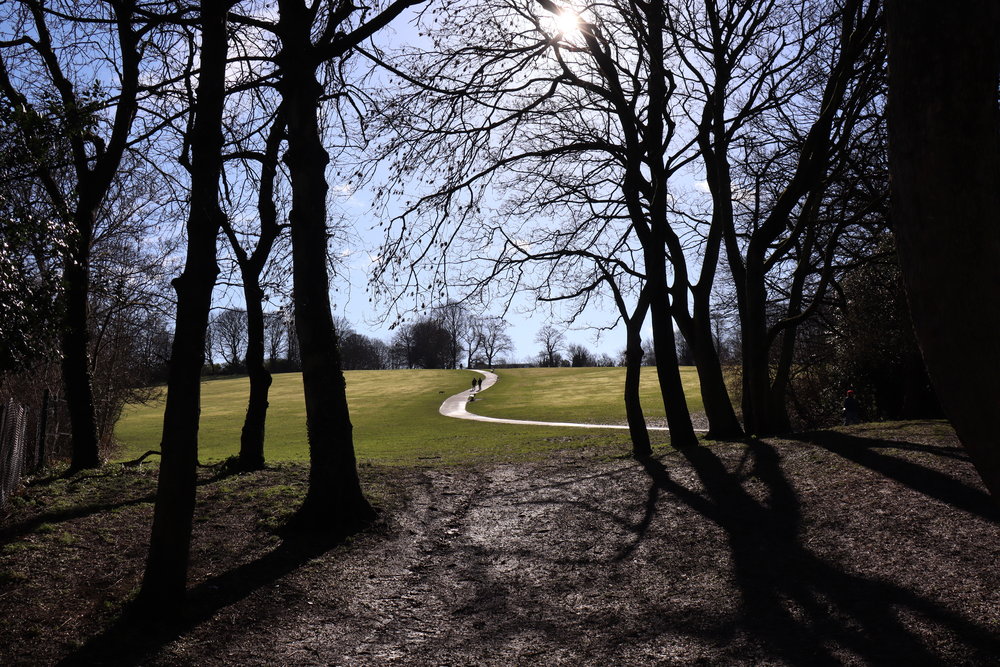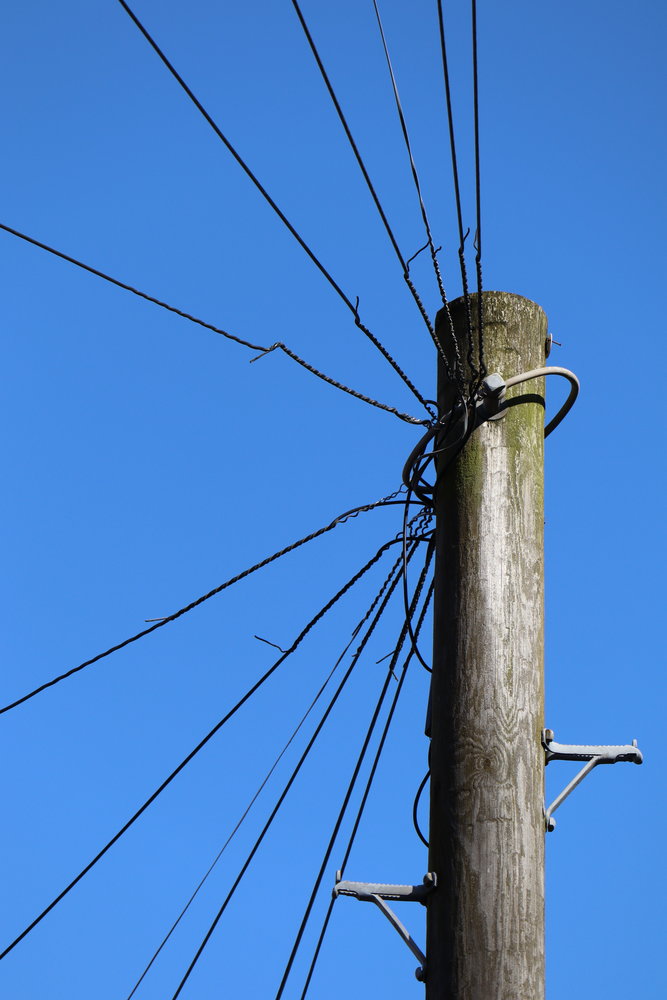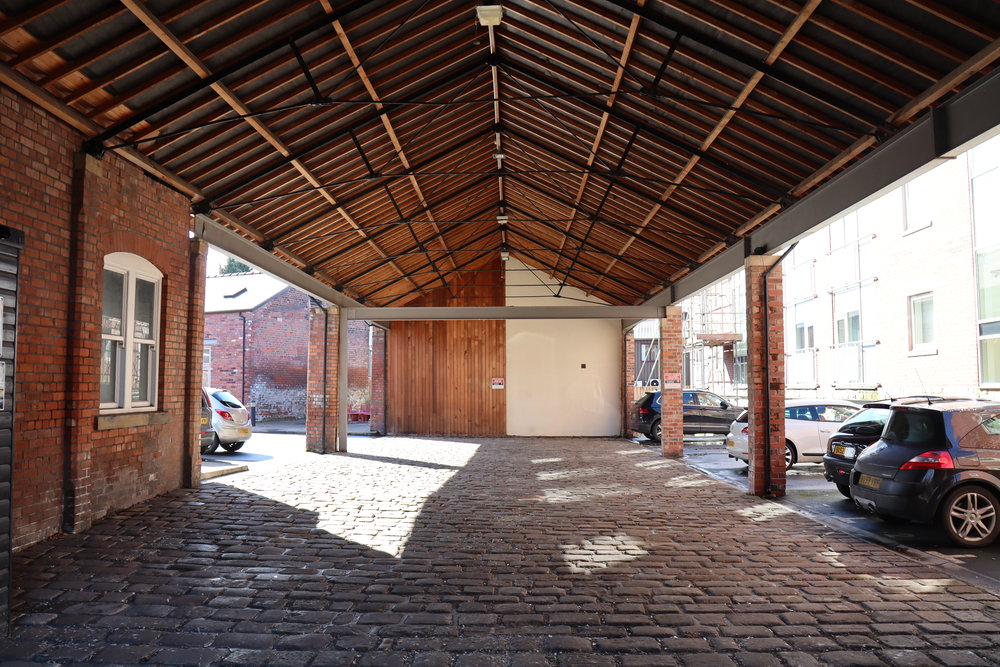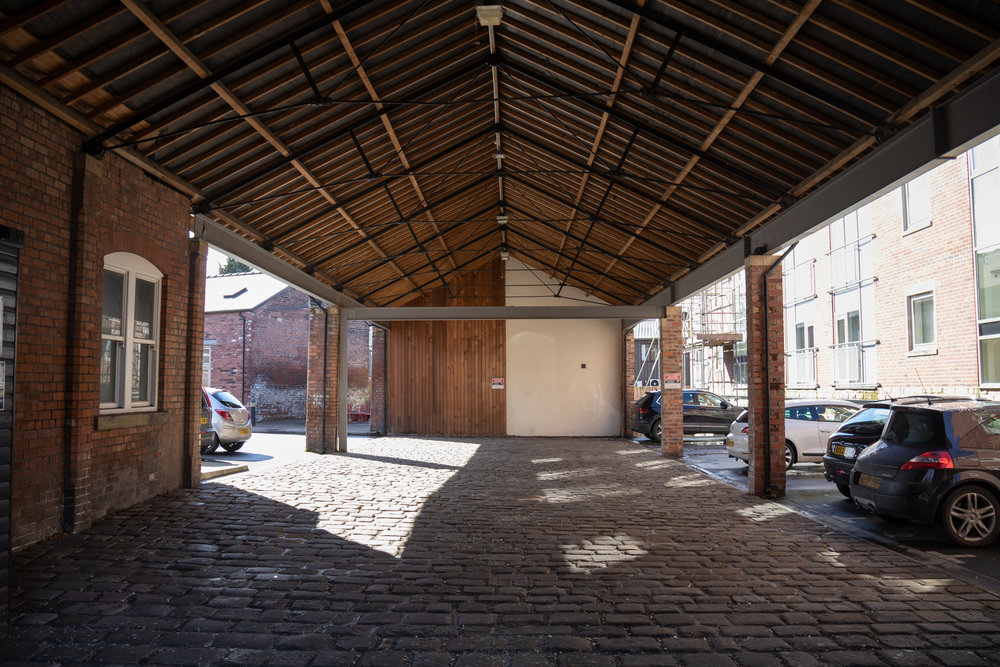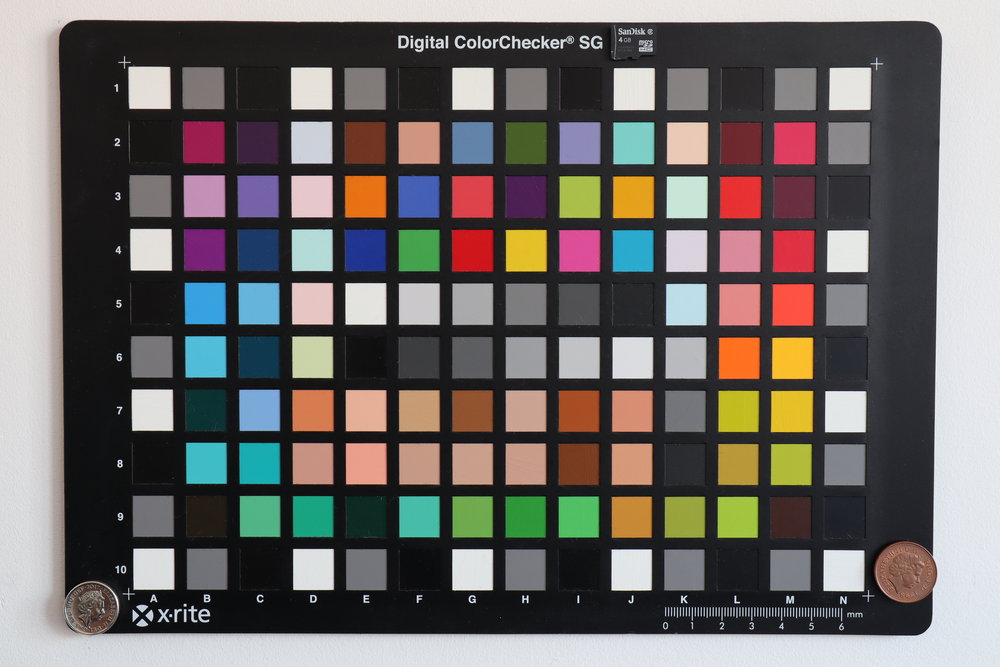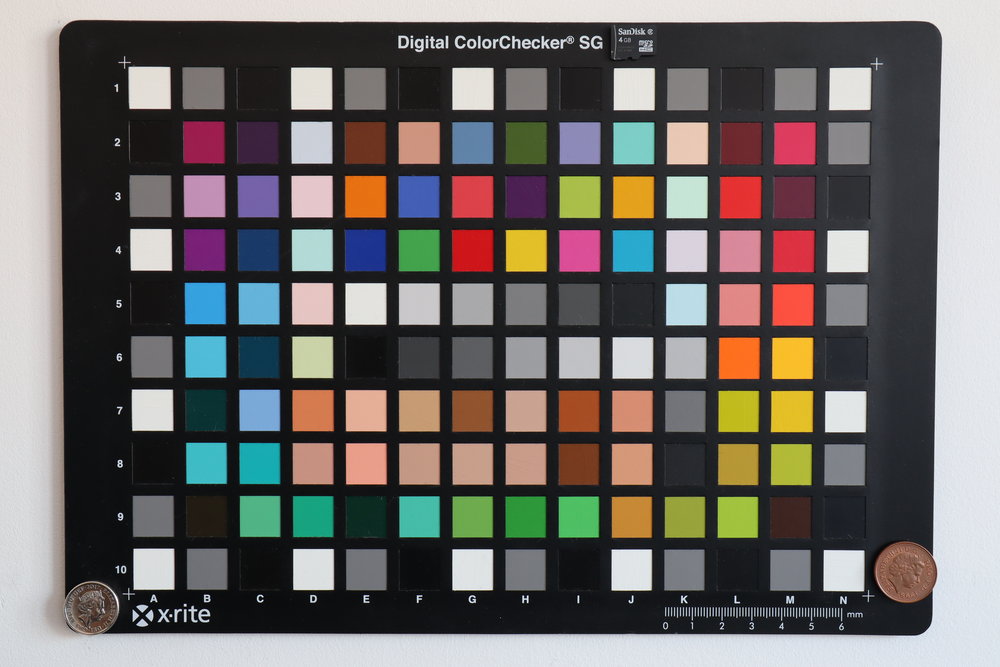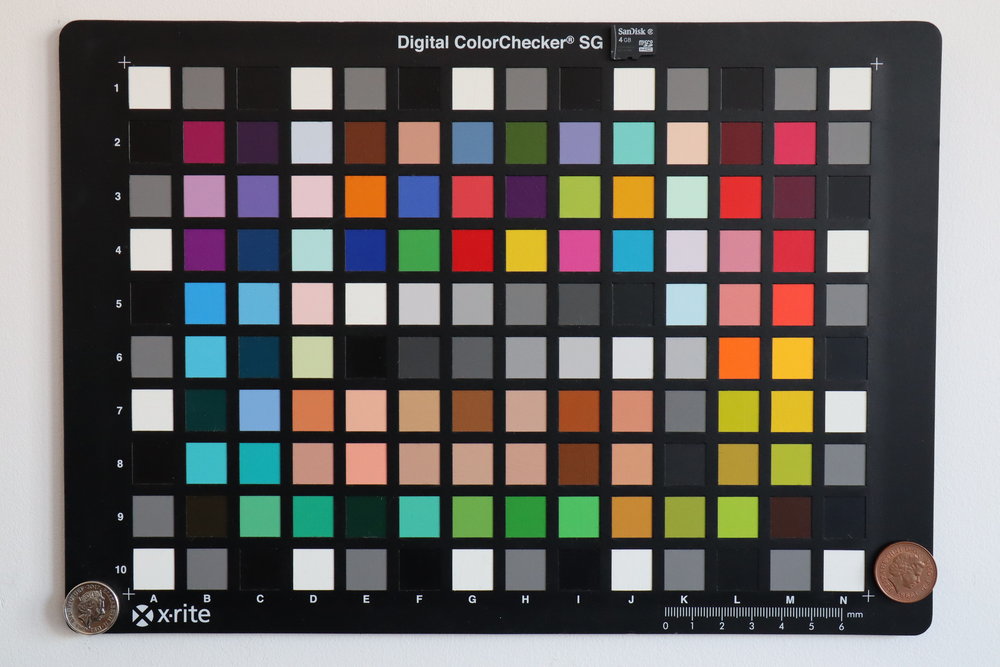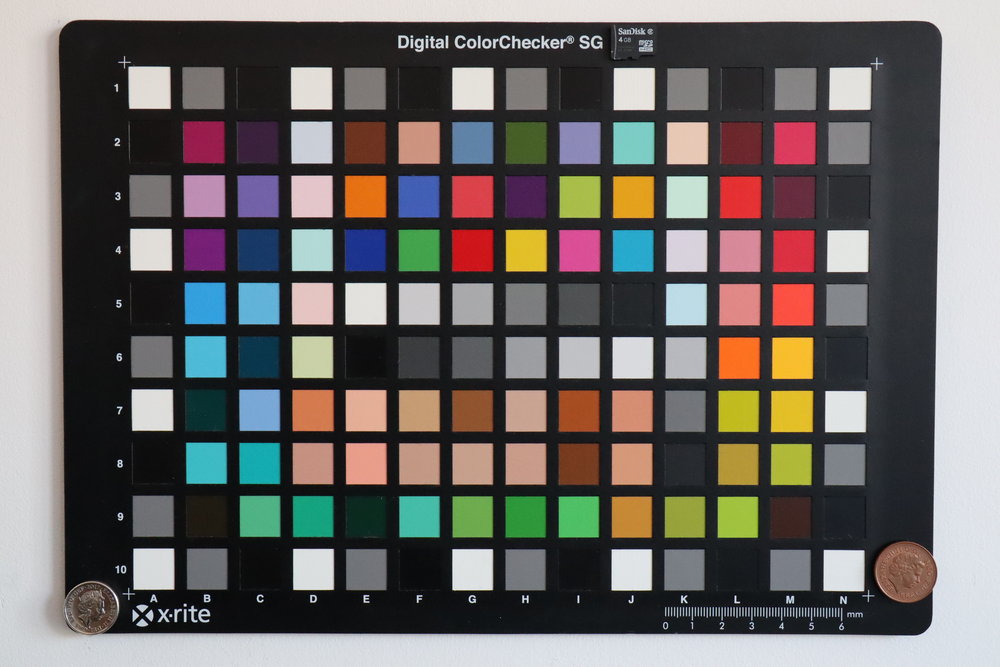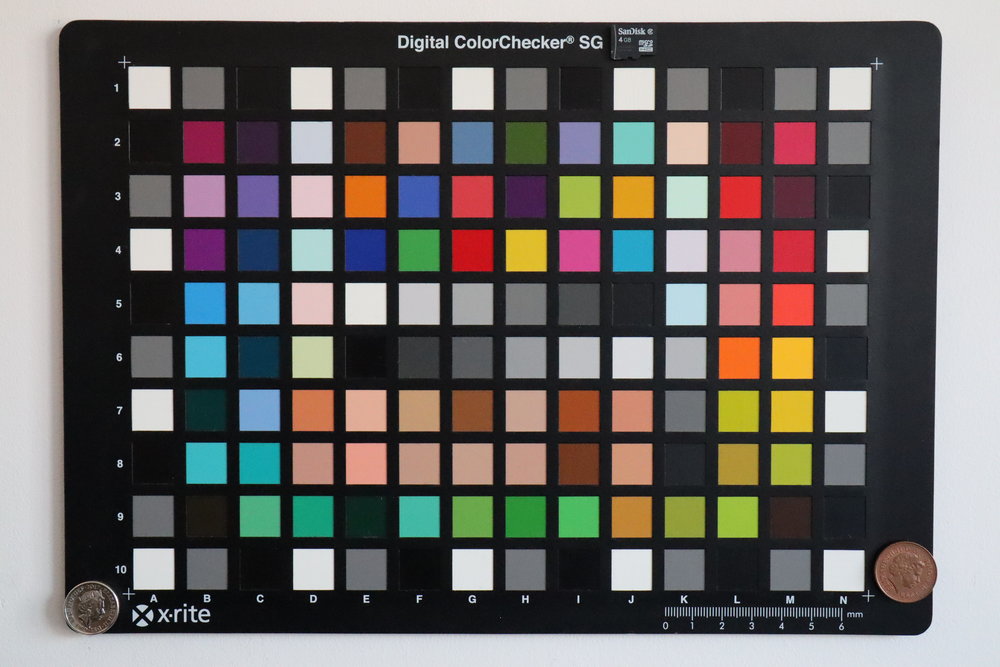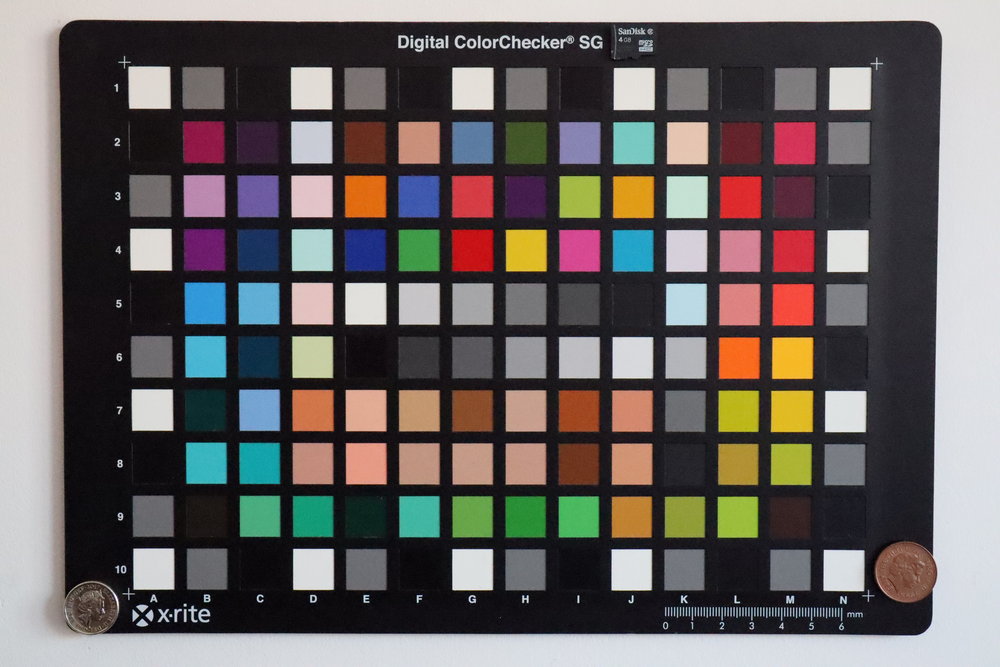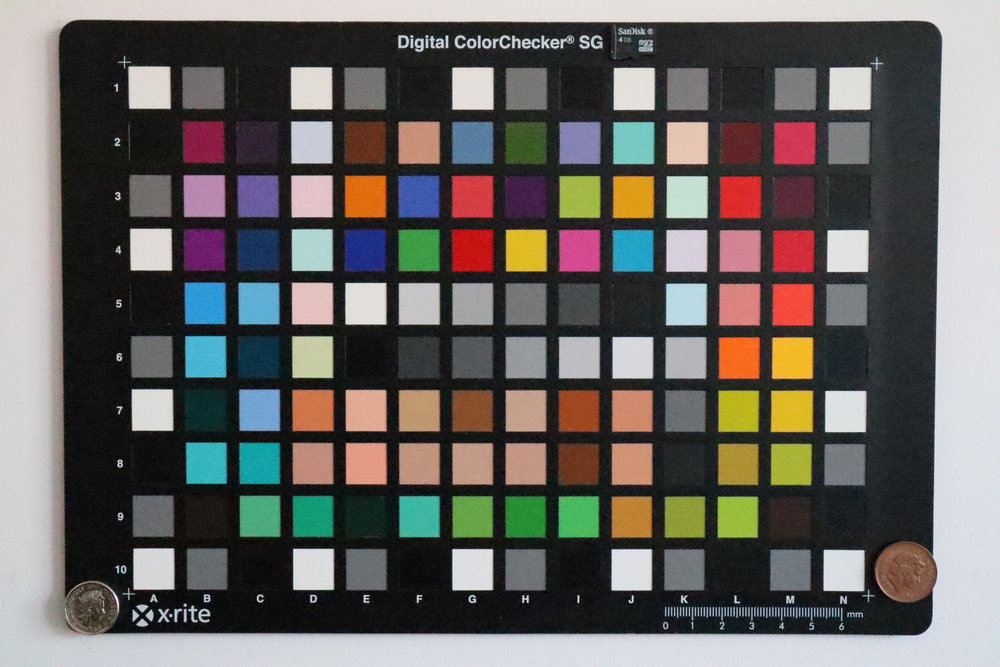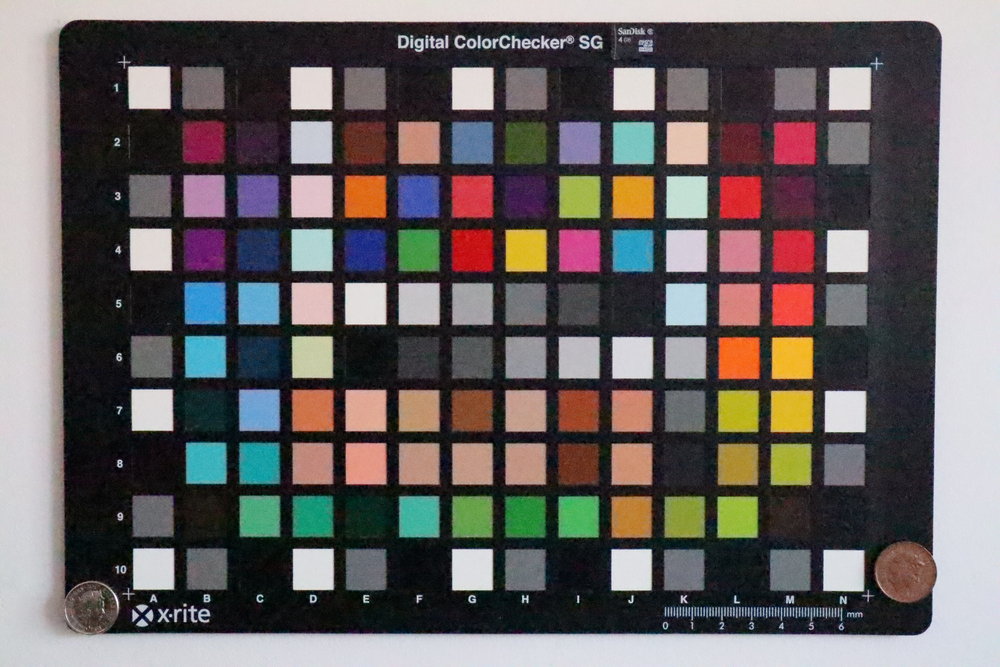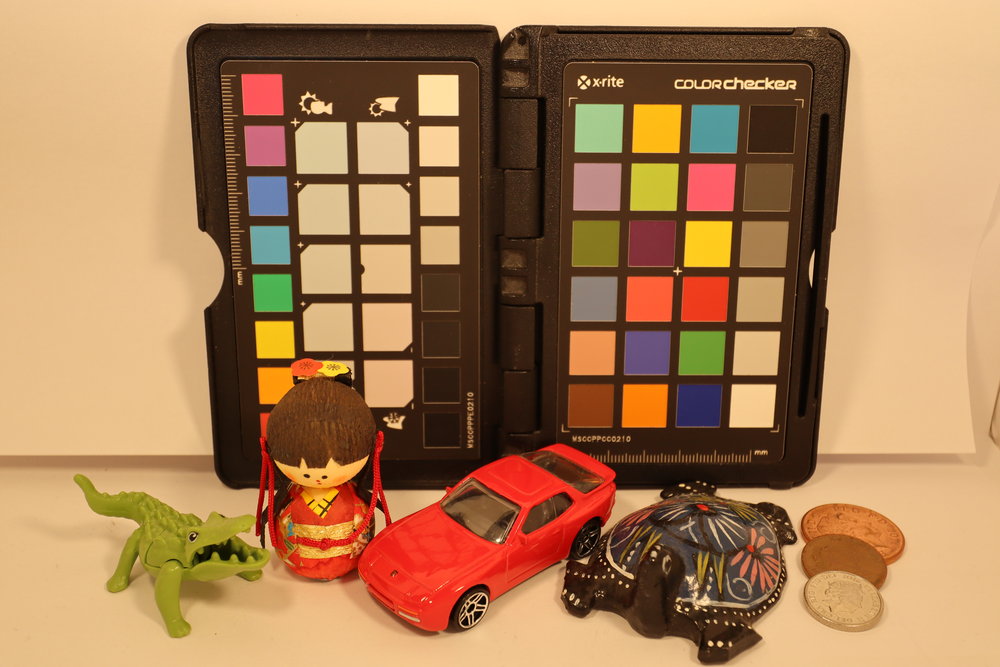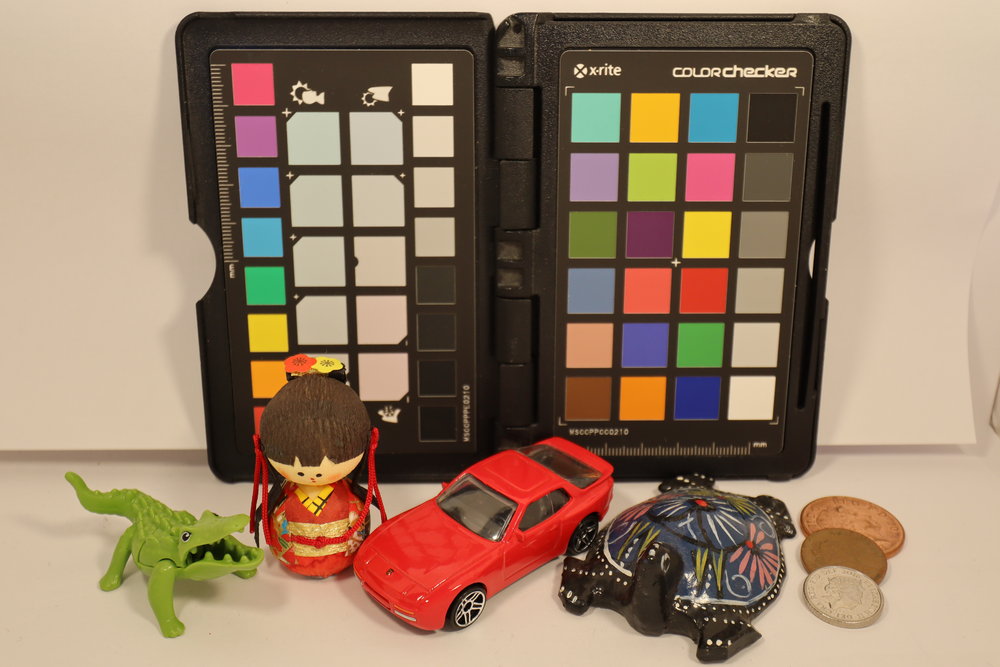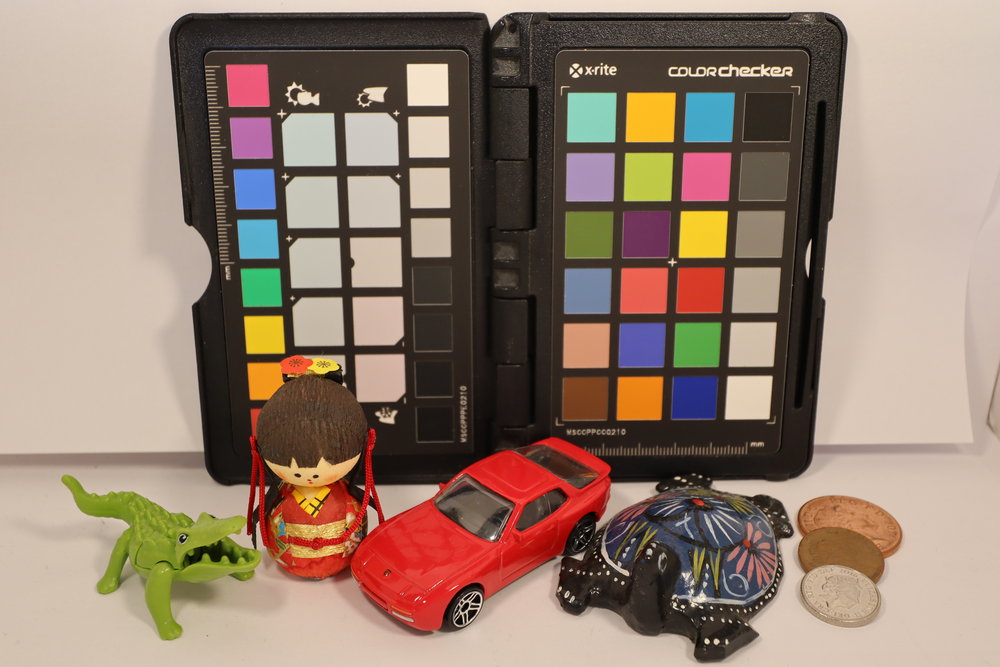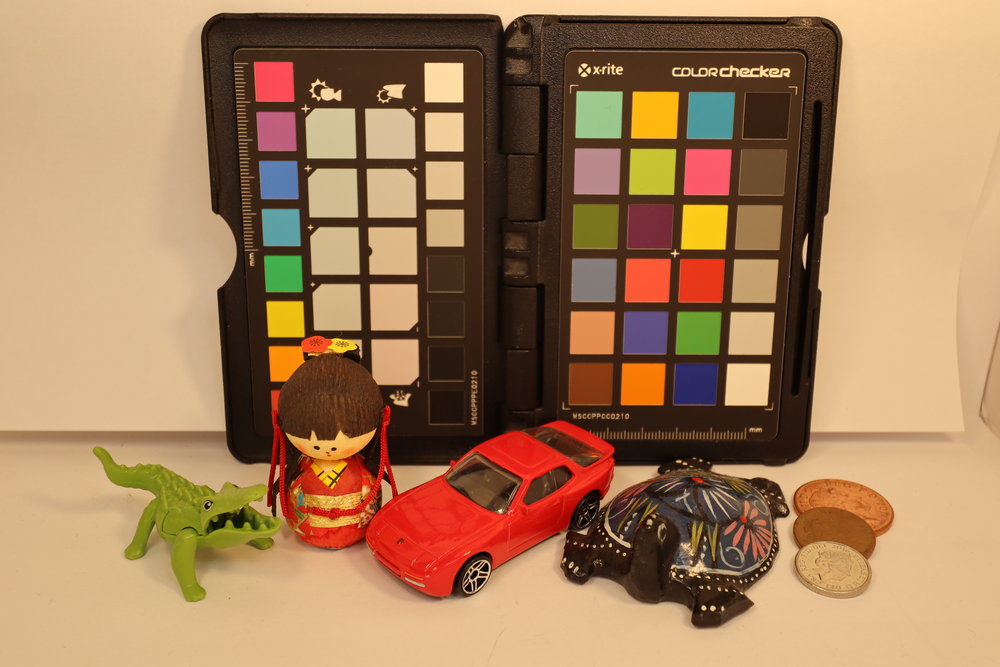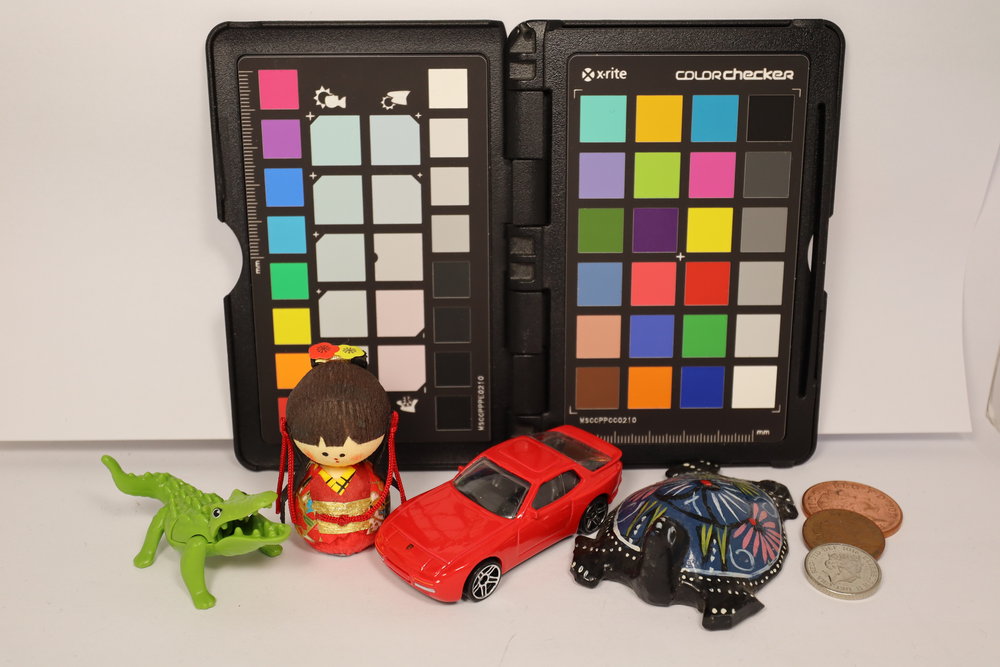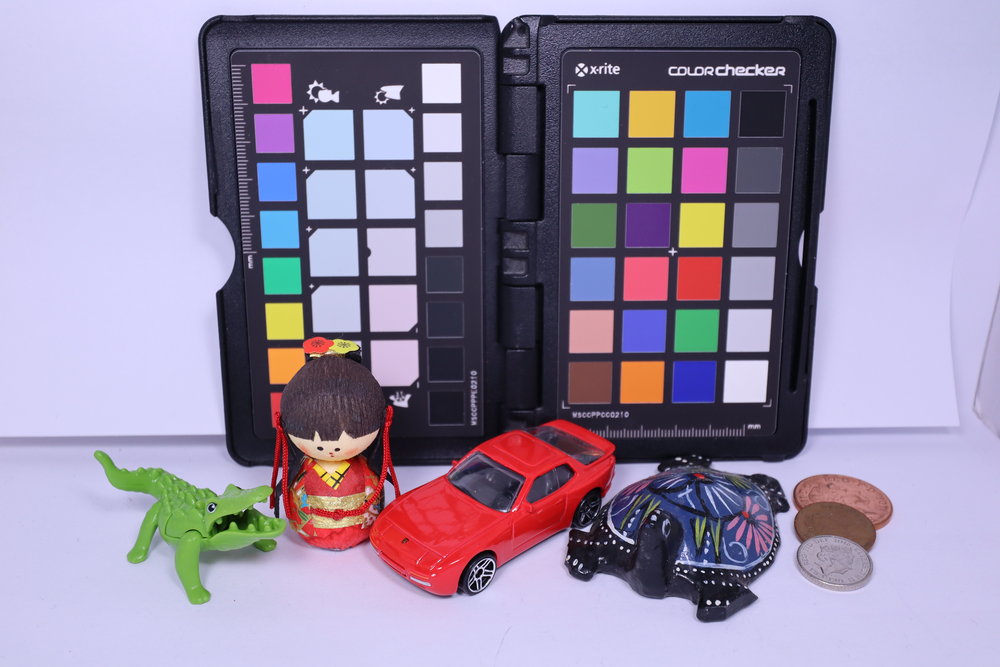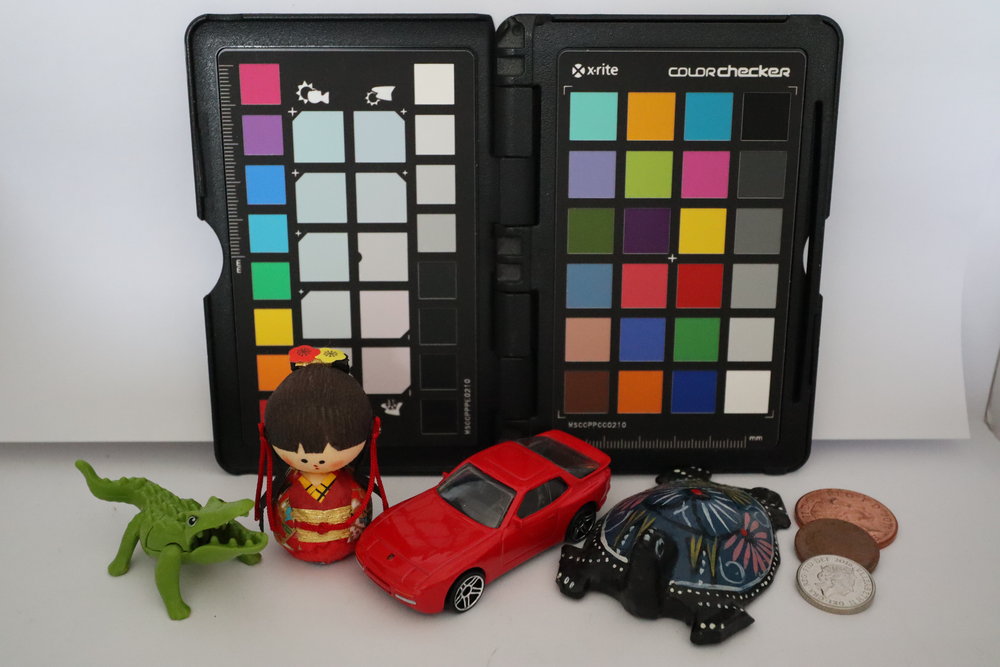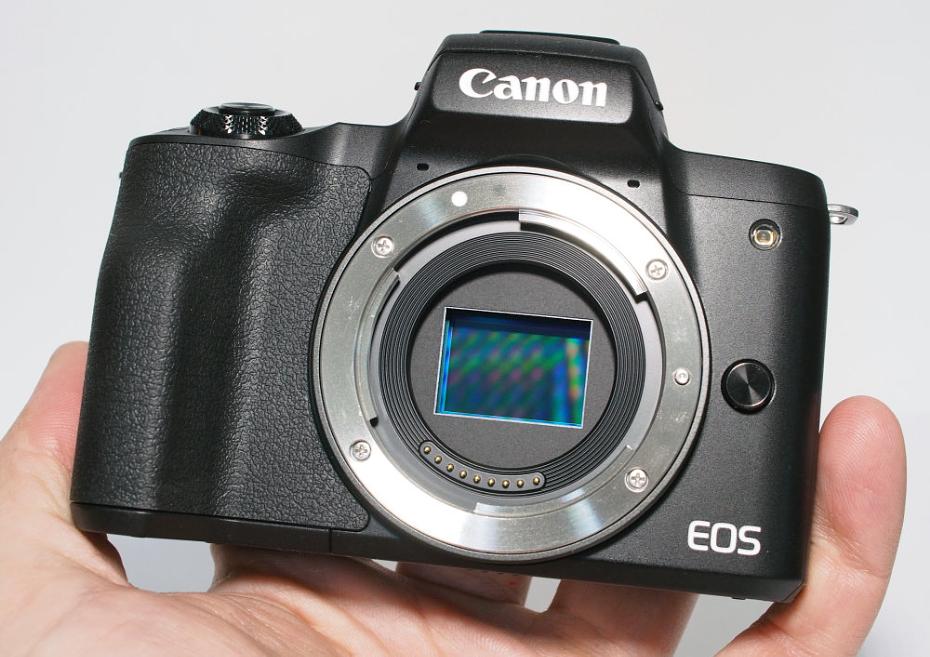
The Canon EOS M50 Mark II is Canon's latest mirrorless camera with built-in electronic viewfinder (EVF), updating the M50, it features a 24mp APS-C CMOS sensor, 10fps continuous shooting, 4K video recording, and face-detection focus. Updates you'll find on the M50 Mark II include improved battery life, vertical video support, and eye tracking focus.
Canon EOS M50 Mark II Features

The Canon EOS M50 Mark II is Canon's entry-level premium mirrorless camera and sits below the 32mp M6 Mark II, but above the M200. The camera offers a 24.1mp APS-C CMOS sensor, with dual-pixel AF, 143 AF points (with large coverage), and 4K video recording, along with a mic socket. Eye-detection auto-focus has been updated to including tracking for both stills and video, just make sure you enable it in the menus.
The M50 Mark II is compact and features a 3inch vari-angle touch-screen. It's compatible with EF-M (EOS-M) lenses, and there are currently 8 lenses available from Canon, ranging from 11mm to 200mm. If you want to use Canon EF lenses, then you can use the Canon Mount Adapter EF-EOS M. If you do buy a Canon EF-M camera, then you'll also find lenses available from third parties, including Sigma, Samyang, Meike, and others.
Canon EOS M50 Mark II Vs M50 (Mark I)
- Improved battery life: 305 shots vs 235
- Vertical video support
- Eye-tracking AF for stills and video
- Live streaming support to Youtube (via smartphone internet)
- Tap video record button on-screen
- Movie self-time option added
- Electronic shutter option
- Focus down to -4EV
- Slightly lighter 387g vs 390g
Like the M50, the M50 Mark II is also compatible with Canon's EOS Webcam Utility so that you can use the camera as a webcam, or for streaming.
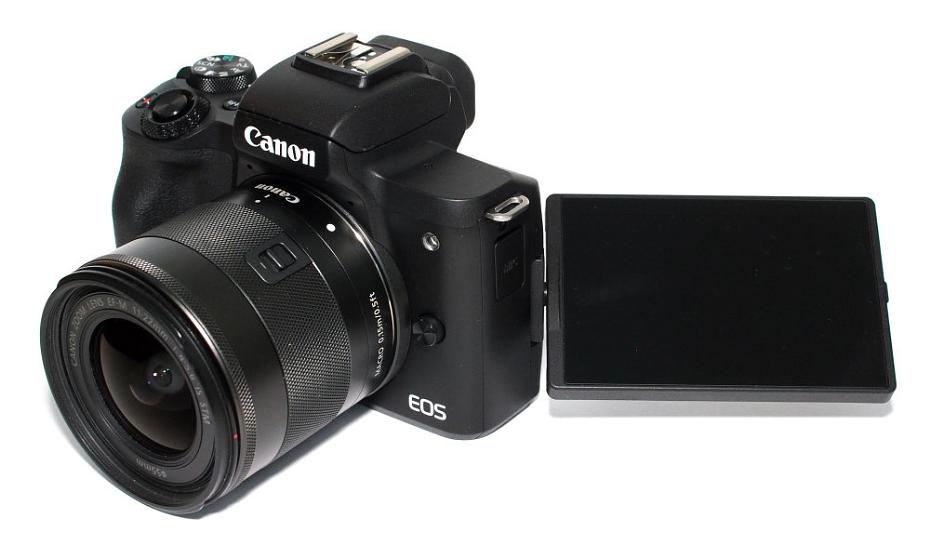
Nb. The Canon EOS M50 Mark II is also known as the EOS Kiss M2 in some markets
The EOS M50 Mark II features Canon's guided user interface, making it easier to use for beginners. You can also use the touch-screen to change settings and go through the menu system. If you're more familiar with Canon's normal menu system, then you can switch back to the standard menus.
The camera offers P, A (Av, aperture priority), T (Tv shutter priority), M, Auto, Hybrid, Scene, Creative and Video shooting modes. The scene modes available include: Self-portrait, Portrait, Smooth skin, Landscape, Sports, Close-up, Food, Panning, Handheld Night Scene, HDR backlight control, and Silent mode. There are a number of creative effects, including Grainy B/W, Soft focus, Fish-eye effect, Water painting effect, Toy camera effect, Miniature effect, HDR art standard, HDR art vivid, HDR art bold, and HDR art embossed.
4K (UHD) video is recorded at a resolution of 3840x2160 at 25fps and features 4K time-lapse recording, and lets you save still images from video. 4K video recording has a 1.56x crop, which increases to 1.75x with digital image stabilisation (IS) enabled, or 2.26x crop with enhanced IS. The electronic viewfinder (EVF) has a high resolution of 2.36million dots and a quick refresh speed.
The camera also offers high-speed video recording, at 100fps and a resolution 1280x720 (720p). The time-lapse video mode can record a FullHD or 4K video.
Wi-Fi, Bluetooth, and NFC are all built-in making it easy to set up a connection to your smartphone, and transfer images, as well as control the camera.

Key Features
- 24.1mp APS-C CMOS sensor
- DIGIC8 image processor
- 3inch vari-angle touch-screen, 1040K dots
- 2.36million dot EVF (0.39inch, 120fps)
- Face and eye-detection AF
- 143 AF points
- 10fps continuous shooting (Single-AF)
- 7.4fps continuous shooting (C-AF)
- 4K UHD video recording at 25fps
- ISO100 to ISO25600 (extends to ISO51200)
- Guided user interface
- Auto White Balance (with White priority)
- Manual pop-up flash
- Wi-Fi, NFC and Bluetooth, with auto-transfer
- CR3 14bit RAW
- C-RAW (Compressed)
Canon EOS M50 Mark II Handling
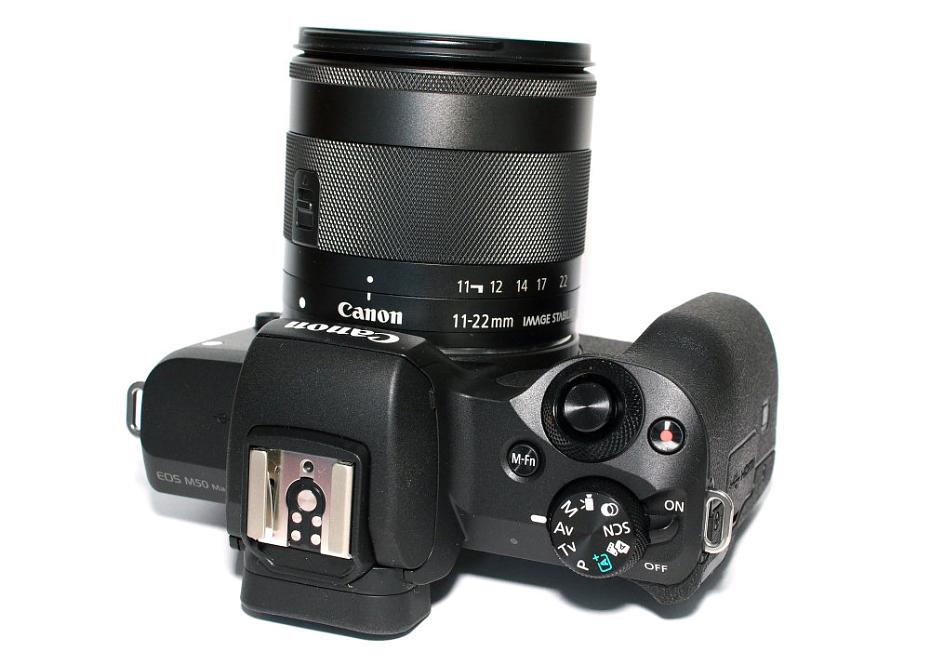
The memory card and battery compartment isn't locking but stays in place. It feels a little flimsy, but shouldn't cause any real issues, as it has a metal backing that is spring loaded. If you have the camera mounted on a tripod, then it can be difficult to open the battery compartment, which is a shame, as you will most likely want to change batteries when recording video.
The two top dials are both made out of metal and textured with a grippy surface, and one of these is the mode dial. As there is only one actual command dial, in manual mode you need to press the +/- (exposure compensation) button to switch between shutter speed / aperture and exposure compensation.
The buttons are a good size, except for the Wi-Fi button on the right-hand side, which is a little small, most likely so that you don't accidentally press this. The 4-way controller with middle Q/Set button is also on the small size, and if you have large hands it may take some time to get used to this. The layout of controls means that you can easily reach all of the buttons when holding the camera with one hand.
The touch-screen can be used to set the focus position, and you can use "Touch and drag AF", simply use the touch-screen to move the focus position, whilst looking through the electronic viewfinder (EVF). There are 143 / 99 focus points (depending on lens used), and you can set the focus point to almost anywhere on the screen, except for the very edges of the screen. Focus works well, with the focus assist lamp helping in low-light, with focus working down to -4 EV. Focus peaking is available when using manual focus.
The screen quality is good, with a gapless design, with good viewing angles. The screen can be turned inwards so that when you close it, it protects the screen from scratches. Colour reproduction is very good, and the EVF and screen both match each other for brightness and contrast, although the view in the EVF is slightly more saturated.
The electronic viewfinder (EVF) has a high resolution and looks good, although is quite small compared to more expensive mirrorless cameras. The camera will automatically switch between the rear screen and the EVF when you hold the camera up to your eye. The rubber surround is comfortable whether you're wearing glasses or not, and there is dioptre correction under that can be adjusted.
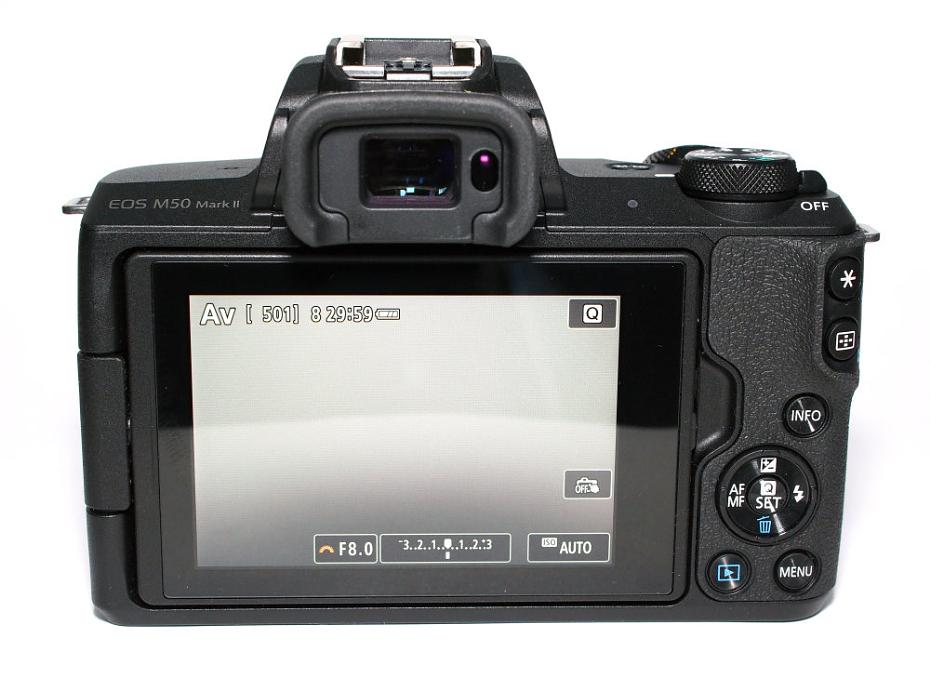
Menus – The guided menu system can easily be switched off if you’re already used to Canon’s menu systems. If you’re not, the guided menu system is clear and easy to use, with brighter text and larger icons. If you go for the standard menu system, this is clear and well laid out, and you can use the touch-screen with both menu systems. The Q button gives quick access to settings, and these can also be changed with the touch-screen.
Canon has included the newer raw format: CR3 (14bit) which produces a 28.9mb raw file. They've also included C-Raw (compressed raw), which gives a 16mb raw file, although the size is likely to vary depending what's in the shot. You can use Canon's provided software to process these raw files, or Adobe Photoshop, if you have a version that is up to date.
Wi-Fi features - Setting up a connection to your smartphone or tablet is relatively easy. As the app, Canon Camera Connect guides you through the process making it as easy as possible for you. Once set up, it’s easy to transfer images over, as well as remotely control the camera. You can also use the app to add location information to your photos. Bluetooth allows low-power transfer of images, without draining the battery as much as Wi-Fi.
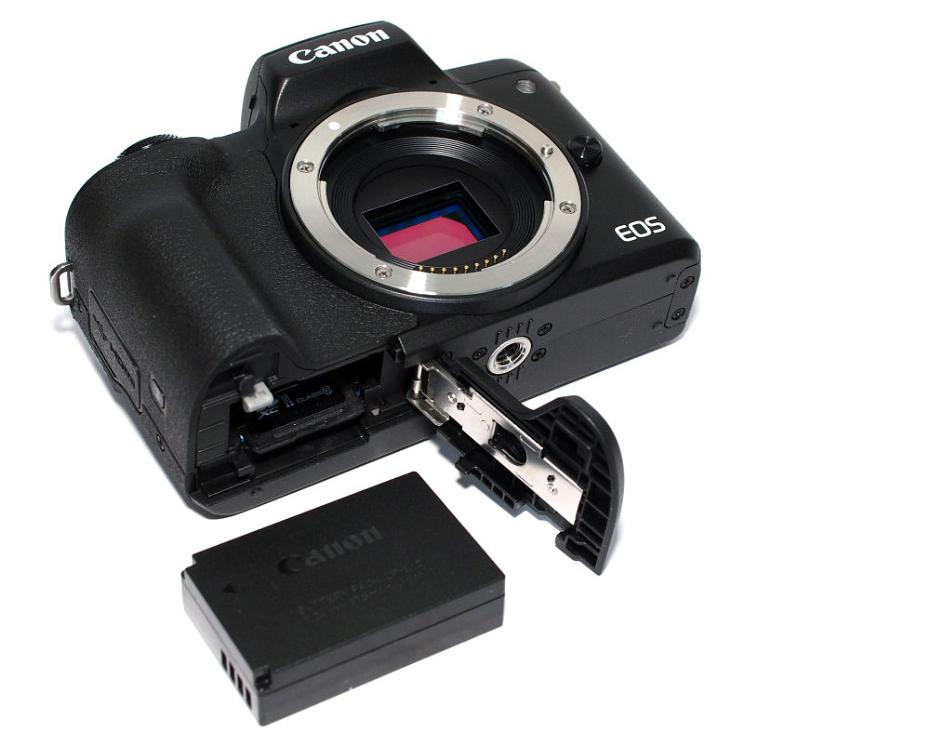
Battery life - Battery life is rated at 305 shots according to Canon / CIPA test results, which can be extended with ECO mode switched on. Whilst battery life has been improved, we'd still recommend purchasing a second battery.
Canon EOS M50 Mark II Performance
The performance section is where we look at the image quality performance of the camera. Additional sample photos and product shots are available in the Equipment Database, where you can add your own review, photos and product ratings.
Canon EOS M50 Mark II Sample Photos
Sample Photos - Colour reproduction is excellent, and the same as you get from other Canon EOS cameras, with good colour saturation. Skin tones are good, and detail captured by the kit lens is quite impressive. The flash performs well, with no signs of red-eye visible. Dynamic range captured is quite good, with the "Auto Lighting Optimizer" giving a boost to shadows. When trying to recover lost highlight detail, we managed to get most of the highlights back, but lost some detail in the brightest areas.
Shutter response and focus speeds are very impressive, particularly in good light. This slows in low-light. Shot to shot time is also very impressive, although the flash will slow this down.
Digital Filters can only be used when shooting JPEG only, and can't be shot when shooting both JPEG+Raw images. There is no built-in automatic panoramic mode. You can choose picture styles, for example, "Portrait", "Landscape", "Fine Detail", and there are options to adjust sharpness, contrast, saturation and colour tone.
Lens Performance - We shot with the 18-150mm kit lens mostly, which gives reasonable performance. The lens also has built-in optical image stabilisation, which helps in low-light. Like most Canon EF-M lenses, the lens mount is plastic, and does not feature weather-sealing.
The camera has a number of options in the camera to correct for any lens distortions, including peripheral illumination correction (vignetting), distortion correction, digital lens optimiser, chromatic aberration correction, and diffraction correction. This means that almost all of these issues should be corrected automatically when switched on, and it's a good idea to keep these switched on, as distortion can be an issue at the wide-angle end of the lens.
If you are interested in better subject separation, then a bright prime lens is recommended. From Canon, you could look at the EF-M 35mm f/1.4, or from Sigma there is the 56mm f/1.4, and 30mm f/1.4. Alternatively you could look at using an adapter so that you can use EF lenses.
Face and eye-detection work well and is particularly useful for portraits and photos of people, and is now available in video mode as well, as long as you've enabled it correctly in the menus.
Canon EOS M50 Mark II ISO test images
ISO Noise Performance - The M50's ISO range can be extended to ISO51200. For the lowest noise and best detail possible we would recommend using ISO100 to ISO3200, as images have low levels of noise and good levels of detail. For lower light situations ISO6400 to ISO12800 still provides good results, although noise increases and detail is reduced. At ISO25600 noise levels become strong and we would recommend avoiding this setting if possible, although results may still be useful if resized and used on the web. ISO51200 is best avoided as noise is extremely high, and detail is very low.
Canon EOS M50 Mark II White-balance test images
White Balance Performance - Auto White Balance (AWB) gives a warm result under tungsten lighting. Using the AWB: White priority setting it's possible to get a more accurate result under tungsten lighting (but it's still a little bit warm). The Tungsten preset also gives a warm result, so you may need to use manual white balance for things like product shots. AWB also gives a warm result under mixed lighting. AWB performs well under fluorescent lighting so that you shouldn't need to use the preset, however, if you do, then the fluorescent preset can end up giving a colour cast (depending on the temperature of your fluorescent lighting).
Video - The M50 Mark II records 4K UHD video at 24/25fps (PAL) with stereo sound. The ISO speed can be extended up to ISO25600. High-speed video is recorded at 100fps, at a low-resolution of 1280x720. Dual Pixel AF is now active in video mode, whereas on the original M50 it was not, so this should improve focus performance, and has enabled face and eye tracking focus.
The crop factor when using digital IS is quite strong. The 4K video recording has a 1.56x crop, which increases to 1.75x with digital image stabilisation (IS) enabled, or 2.26x crop with enhanced IS. If you're looking to record wide-angle footage, then the 11-22mm lens is equivalent to 17.6-36mm for stills photos, but for 4K video, this becomes 27.5-56mm, so only just wide-angle (assuming you have digital image stabilisation switched off). Here's an example of the scene when in photo mode, versus the 4K video modes:
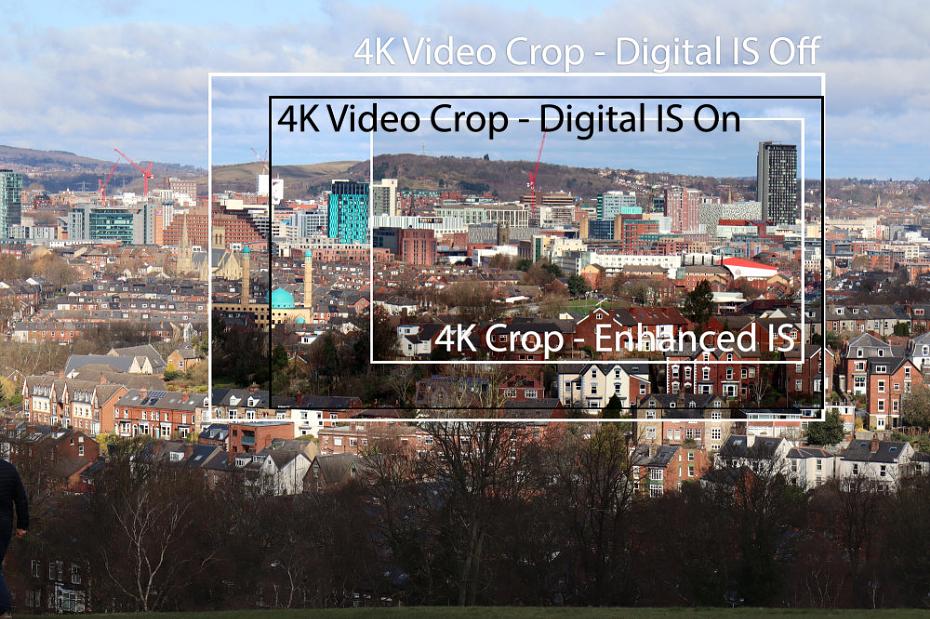
Canon EOS M50 II Video Crop Examples
FullHD video recording uses the full width of the sensor (with digital IS switched off). There's an option for "Auto level" and you can manually set the sound recording level. There are also auto options for wind filter and attenuator.
You can adjust the colour settings for recording video (and for taking photos), however, there aren't any "Flat" or "C-Log" profiles available. The closest would be Neutral (and you can adjust sharpness, contrast, saturation, and colour tone). We used Standard colour for this video.
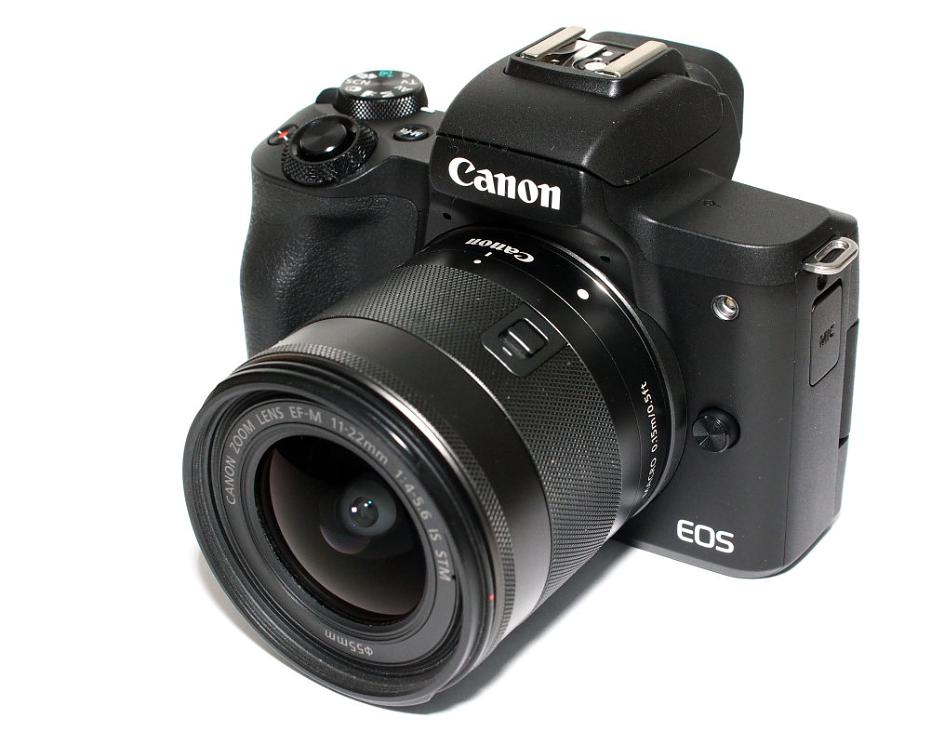
Value For Money
The Canon EOS M50 Mark II is available for £699 with 15-45mm lens, just £50 more than the original M50, which makes it reasonably good value for money for an entry-level mirrorless camera, with 4K video and an electronic viewfinder (EVF). Some alternatives to look at, include the following cameras:
Olympus OM-D E-M10 Mark IV, 20mp, 4K video, 5-axis IBIS, tilting (forward-facing) screen, £629 body only
Fujifilm X-T200, 24mp, 4K 30/25/24fps video, vari-angle screen, £729 with kit lens
Panasonic Lumix G90/G95, 20mp, 4K 30/25/24fps unlimited video, 5-axis IBIS, vari-angle screen, £649 body only
Panasonic Lumix G100, 20mp, 4K video, vari-angle screen, £649 with lens and grip
Sony Alpha A6100, 24mp, 4K 30/25/24fps video, tilting (forward-facing) screen, £749 with lens
Nikon Z50, 20mp, 4K 30/25/24fps video, FullHD 120fps, tilting (forward-facing) screen, £1029 with lens
Have a look at more compact system cameras in our Top Premium Mirrorless Cameras (with EVF), or have a look at the Best Entry Level Mirrorless Cameras (some may have an EVF). You'll also need to buy a memory card and a case or bag to keep your camera safe and protected - have a look at our complete guide to camera bags.
Canon EOS M50 Mark II Verdict
Like the model before it, the M50 Mark II offers a compact, DSLR styled mirrorless camera, with a 24mp APS-C CMOS sensor, which gives excellent image quality, with the same excellent colour reproduction that you get with Canon EOS DSLRs. You also get high-speed continuous shooting, 143 focus points, and a high-resolution electronic viewfinder. It's also one of the cheapest Canon cameras to record 4K video, and the side mic socket will make it appealing for those who want to record video. However, it's worth being aware of the HUGE crop into the frame when using 4K video with digital IS enabled, as this will make wide-angle video recording difficult unless you buy the 11-22mm ultra-wide angle zoom lens.
It would be nice to see Canon introduce new lenses more often than they have, as the last new lens was announced in 2020, and before that September 2016. Considering the EOS M system has been around since 2012, and there are still only 8 Canon EF-M lenses available, you'll most likely need to look at other companies if you plan on expanding your system. It's unfortunate that a camera as good as the M50 Mark II doesn't also benefit from a wider choice of lenses, as you'll need to look at a prime lens for best results, as the 15-45mm zoom lens, and the 18-150mm zoom lens both gave soft images at times.
Before buying into any new camera system, we'd highly recommend looking at what you want to do with the camera, and what lenses are available for it. If the lenses available for the EOS-M cameras suit you, then the M50 Mark II is a great choice, assuming you don't want to record wide-angle 4K video.

